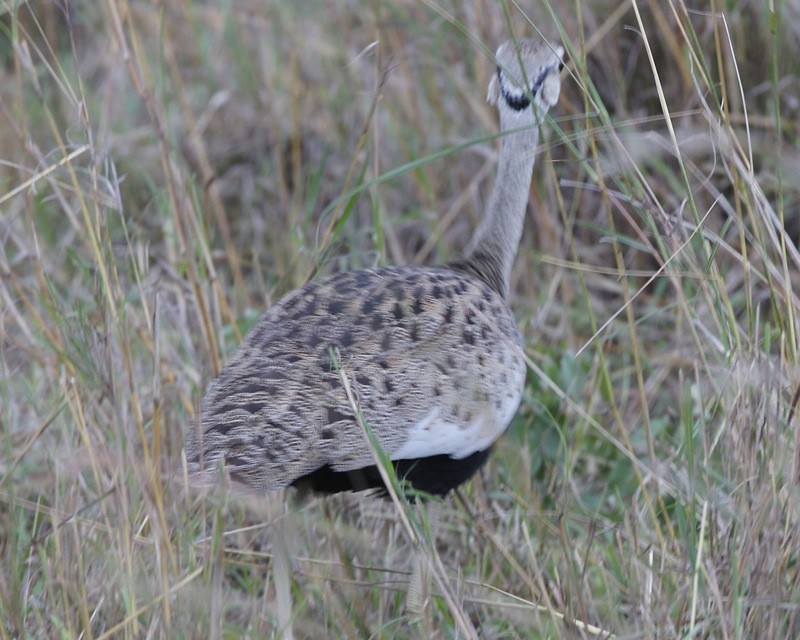Black-bellied Bustard
A species of Black-bellied and Hartlaub'S Bustards Scientific name : Lissotis melanogaster Genus : Black-bellied and Hartlaub'S Bustards
Black-bellied Bustard, A species of Black-bellied and Hartlaub'S Bustards
Botanical name: Lissotis melanogaster
Genus: Black-bellied and Hartlaub'S Bustards
Content
Description General Info
 Photo By Lip Kee , used under CC-BY-SA-2.0 /Cropped and compressed from original
Photo By Lip Kee , used under CC-BY-SA-2.0 /Cropped and compressed from original Description
The black-bellied bustard is 58–65 cm (23–26 in) long. The bill and legs are dull yellow. The male's upperparts have black and brown marks on a tawny buff background; the underparts are black. The head is boldly patterned with black, white and buff. The neck, long and thin for a bustard, is buffy brown with a thin black line down the front that joins the black breast. The tail is brown and buff with four or five narrow dark brown bands. The upper surface of the wings is white with a brown triangle at the base; the flight feathers have black tips except for the outer secondary feathers. The white of the wings is visible when the bird stands, contrasting with the black underparts. The female is plain buff, cryptically marked with darker brown mottling on the back and vermiculation (narrow wavy bands) on the neck and breast. The juvenile is duller and darker, with a dark grey crown and buff spots on the wing. The neck and rump patterns of both sexes, the male's white chin and lores, and the female's vermiculations are points that distinguish this species from its close relative, Hartlaub's bustard. 
Size
60 cm
Nest Placement
Ground
Feeding Habits
Black-bellied Bustard is omnivorous, primarily consuming invertebrates such as beetles, grasshoppers, and ants, along with vegetables, fruits, seeds, and leaves. They exhibit varied foraging techniques, with unique preferences for certain insects and plant material.
Habitat
The black-bellied Bustard resides in sub-Saharan savannas, grasslands, and miombo woodlands, favoring areas with dense vegetation near water sources. Habitats with higher rainfall, such as wetland margins and seasonal floodplains, are optimal. These birds are also found in montane grasslands up to elevations of 2500 meters.
Dite type
Omnivorous
General Info
Feeding Habits
Bird food type
Behavior
In feeding habits it resembles other bustards. In courtship display the male retracts his head to his back, giving "a short rising wheezy whistle, zhweeeeee", pauses in that position, and slowly raises his head, giving "a popping quock or plop followed by soft gurgling". 
Species Status
Not globally threatened.